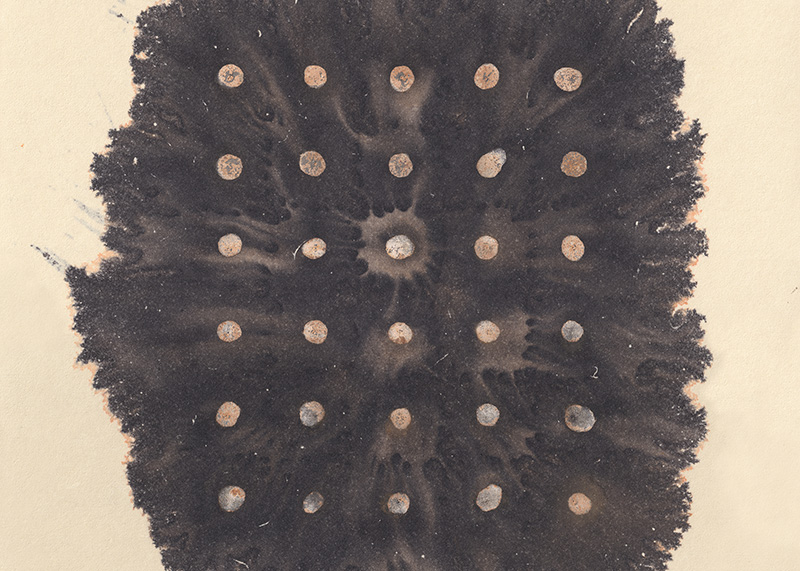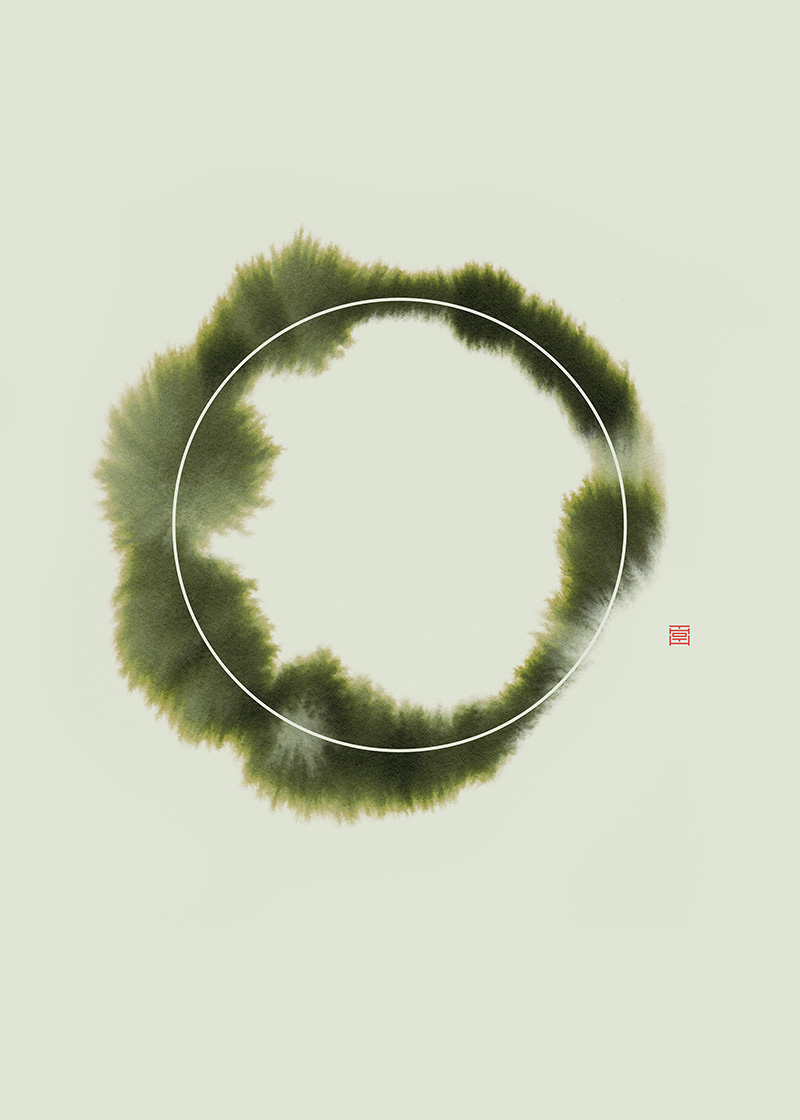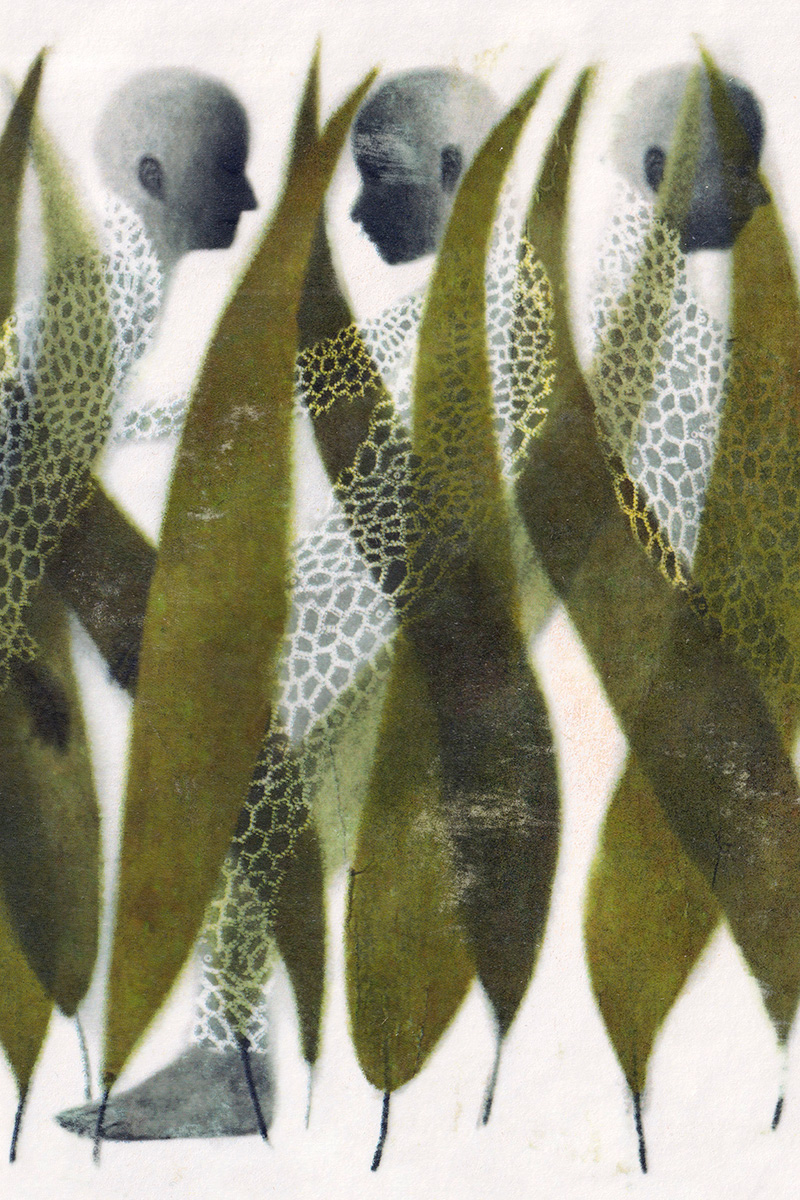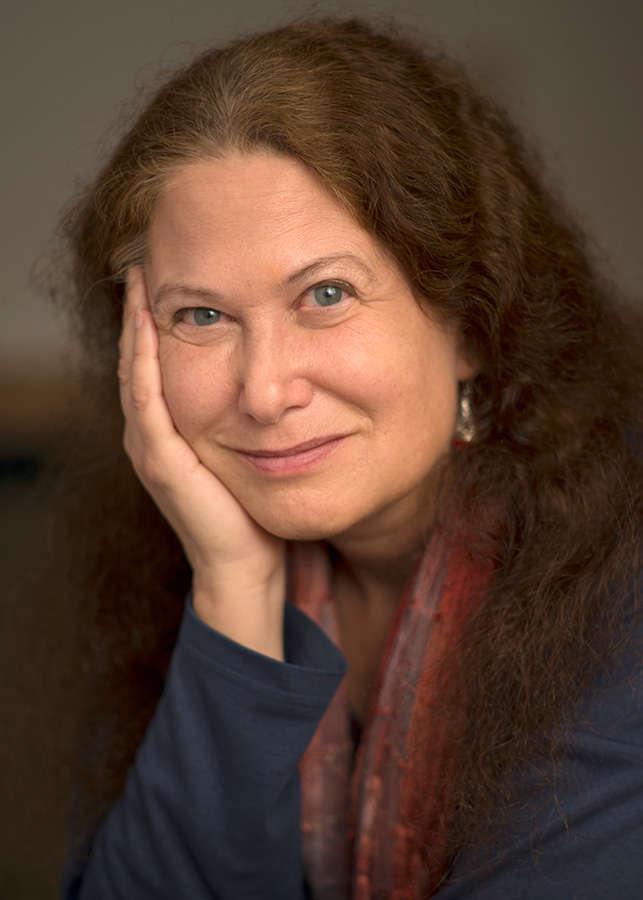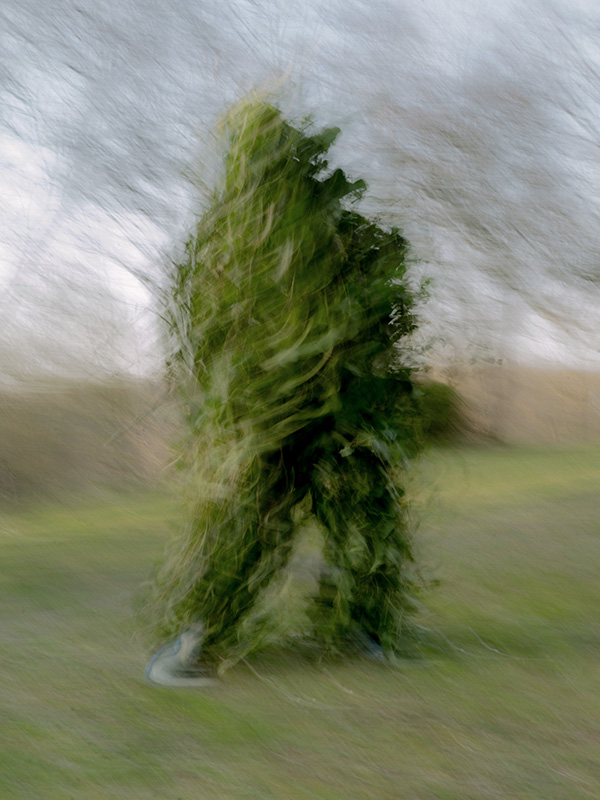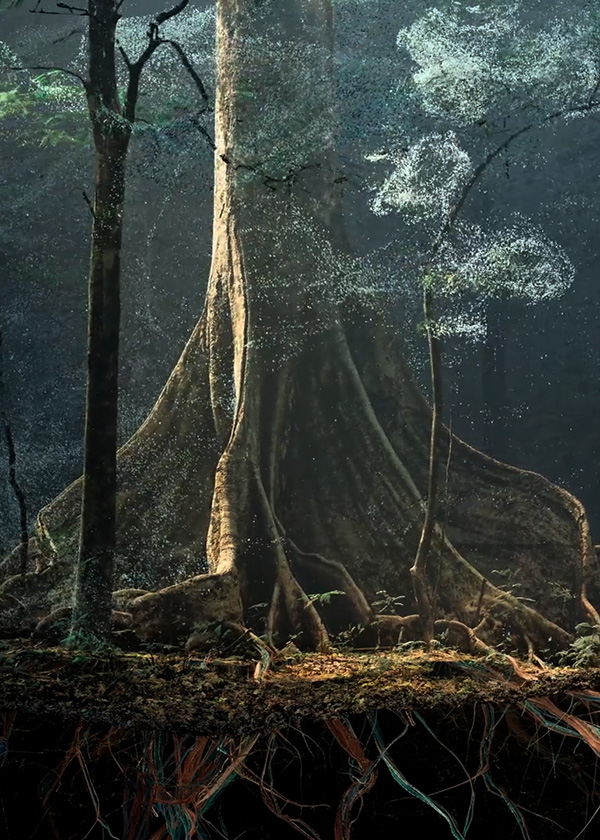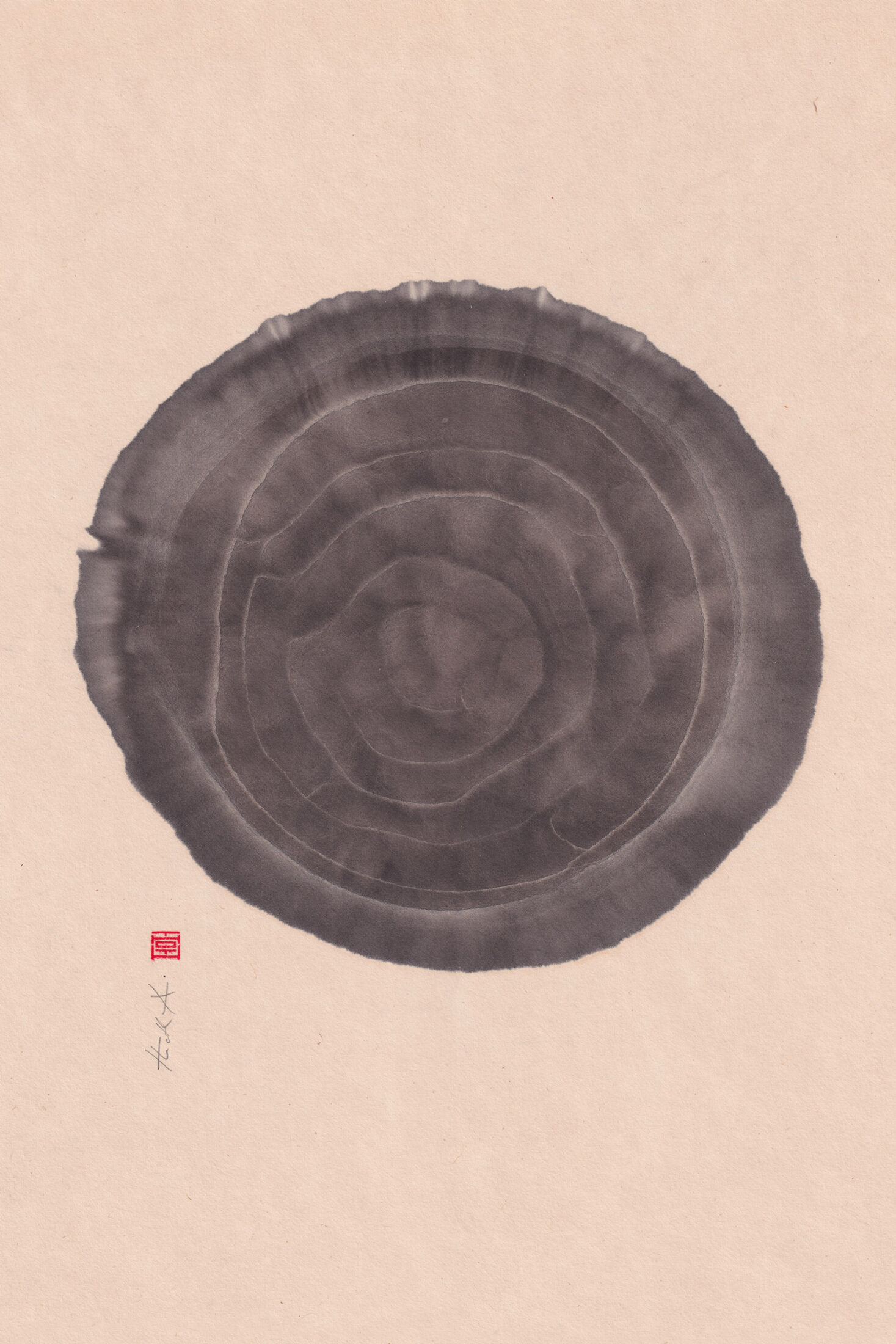
Artwork by Thoth Adan
A Story of Requiem, Invitation, and Celebration
Emmanuel Vaughan-Lee is an author, Emmy- and Peabody Award–nominated filmmaker, and a Sufi teacher. He has directed more than twenty documentary films, including Taste of the Land, The Last Ice Age, Aloha Āina, The Nightingale’s Song, Earthrise, Sanctuaries of Silence, and Elemental, among others. His films have been screened at New York Film Festival, Tribeca Film Festival, SXSW, and Hot Docs, exhibited at the Smithsonian Museum and London’s Barbican, and featured on PBS POV, National Geographic, The New Yorker, and The New York Times Op-Docs. His first book, Remembering Earth: A Spiritual Ecology, is forthcoming from Shambhala in summer 2026. He is the founder, podcast host, and executive editor of Emergence Magazine.
Thoth Adan is a Swiss-born, Austrian-based artist who primarily works with sumi ink and mineral pigments on Japanese washi paper and wood panels. His paintings, abstract, minimal, and gestural, draw inspiration from Eastern philosophies and aesthetics as well as Western art movements such as Abstract Expressionism and Post-Minimalism, merging precision with introspection.
Cultures once revolved around stories that connected our outer senses with our inner senses, allowing us to participate in something much greater than ourselves. Today, we need stories that can help us navigate the complexity of our moment: both the unfolding ecological catastrophe and the love we feel for our burning world. This second talk in a series given by Emergence executive editor and Sufi teacher Emmanuel Vaughan-Lee at our Song of the Seasons retreat on Whidbey Island explores how the story of birth, growth, decay, and death told by the seasons, regardless of where one is in the world, invites us into a space that can hold love together with loss. This kind of story can help us embrace the changes that are reshaping the Earth and root us in reverence for the cyclical nature of existence.
Transcript
I want to start by sharing a quote from the great, late Barry Lopez. And he wrote, “In this moment, is it still possible to face the gathering darkness and say to the physical Earth, and to all its creatures, including ourselves, fiercely and without embarrassment, I love you, and to embrace fearlessly the burning world?” And last night in the film [The Nightingale’s Song], Sam Lee shared the question of how to hold the concept of catastrophe with adoration and love. And those questions really are at the core and are the impetus behind Emergence as a project, these questions to which I unabashedly say, yes, and, we can. But how?
And these questions, and others, but these questions were at the heart of the origin of Emergence, which I view as a shared space of story and the spaces that extend from those stories. And they include you, and that’s what drew you here to participate in a shared space of story. Because stories are very powerful alchemical vehicles of transformation that can hold us. They don’t just explain and help us understand what’s happening—the catastrophe, the contradictions, the paradoxes, the deep, profound human and more-than-human spiritual-metaphysical questions that underlie the moment that we are in—they can also hold us. That is the true power, the true technology of a story, which is why a story always underpinned every single culture. It was the core foundation: the creation stories, the creation myths, the values that were embedded in stories, that helped us understand not only the connection between the Earth and the stars but also how to be in that space of connection between the Earth and the stars.
Practical reverence, as Robin Wall Kimmerer likes to say, is embedded in those stories that help weave us back into relationship with the cycles that underpin all of existence. How to be, how to feel, how to open our hearts and our beings. How to be with catastrophe is not a new concept. I must admit, it’s increased and grown and turned into something that is very hard to even comprehend, but it is not new. Stories have always helped hold catastrophe and love, just like the human heart. Because stories are an extension of the human heart. They work in parallel with the human heart—at least the good ones—because they tap into a primal knowing, a primal memory, a primal way of being. And we are more than just physical beings. We are spiritual beings. We have physical hearts and we have spiritual hearts, and a good story knows how to weave those realities together to help us hold catastrophe with adoration and love. And let me add, with reverence. Those were the stories that were always told.
That is the story, for me, in the cycle of the seasons as well. The story of birth and life and growth and decay and death that helps us understand, in the most basic of ways, change, time, frailty, death, rebirth, how to be in relationship to the world around us through this mirroring that informed those stories, that always helped us hold catastrophe, hold adoration, hold love. But a story can never exist in isolation. If it does, to me, it becomes a dead story. Which is why I was so moved yesterday sitting around the table, hearing some of you share your stories, not just your personal stories, but also your stories of how the stories that were shared in the context of what Emergence has been offering drew you here. Because to me that reveals that alive nature of what a story is. It’s a space of invitation, just like the seasons are a space of invitation.
And a story does not exist in isolation, because it is based on something larger than it. And if it is based on something larger than it, then it has space to invite you in. If it is held within the construct purely of a limited experience, there’s no room. And of course we can create a story around a human construct, a human set of emotions that can bring people into shared emotional experiences, and that’s valuable. But to me it’s a limitation of the power of story if it does not include the larger enveloping presence, which to me is always a living, breathing Earth.
I always think of and not or. We can have a story that includes the human, just like Kalyanee’s story that you watched last night [Taste of the Land]. A very human story of her family as refugees, fleeing war, seeking home, and her journey to recover a sense of home. But that sense of home was not just a nation. That sense of home was not just a place even. It was place in the broadest sense, where a home can exist in the land where she was born and the land where she lives now. A story can envelop all of those things, and it should. A story can be simple and complex, but it should not be minimized by excluding the larger space in which it lives.
And so many of the stories that really run our world now— Because stories do do that; they are a technology that is the foundation on which constructs are built: ideologies, economic systems, spiritual, religious, cultural, the list goes on. Those stories run our world. And they exclude the broader space. And they stay within this very, very human-centric way of being, which is incredibly destructive, incredibly toxic, and incredibly dismissive, not just of the humans it excludes—and it does that very well—but the broader space, Her, this Earth. It is dismissive.
And I always think that a story, if it is worth its salt, must almost always be rooted in something that you can see and you can taste and you can touch and you can hear in the living, breathing Earth with both the outer senses, and if you allow yourself to sink into it, the inner senses. That is why, for me, returning to these basic ways that the Earth functions and working with story, working with space, working with an embodied way of trying to bring story into space and place, is so important. It is no longer an abstract idea. It is rooted in something real. Like I shared on Friday. These cycles, they are not abstract. They exist in everything. And they can help us hold catastrophe with love and adoration and reverence, because they do. Because within the season, as it unfolds—regardless of where you are in the world, regardless of if you have defined experiences of spring, summer, autumn, and winter—there are cycles of birth and growth and decay and death present. In the tropics, where you do not experience the same extremities, there is an ongoing cycle of birth and growth and decay and death almost happening in each moment. We can turn to the ways in which the Earth functions for reflection, to be mirrored by what exists in a foundational way that cannot be argued with. It can be ignored. It can be dismissed. We can try and control it, but I don’t know if you can argue with it. Because the cycle is. Birth, growth, decay, death—they just are. And they have informed so much of how we function as human beings.
Our own lifespan is a mirror for this, which is why when that cycle is broken, it breaks us open even if we don’t acknowledge it. Because it’s like the basic fabric of existence is being torn asunder, taken apart—this reflection of the real nature of existence that is embodied in this cycle of growth and decay and death and rebirth and growth and decay and death and rebirth—it’s like we don’t have an anchor point. We become unrooted, unmoored. The cycle spins and we move here in our straight line ignoring it. What can hold us when we are unmoored? We can grab onto things that exist within a human construct, but they, even if they’re very good ones, are still based in abstraction, not based in truth and the reality of how we evolve as a species, physically, spiritually, culturally.
We are underpinned by something so ancient that can hold us. Because we are in a very interesting time, as you all know. It’s too hard to really comprehend when you really look at it. It’s overwhelming. It’s like this morning I was thinking of this story of Rumi. And of course he’s sharing the story in a different context, a very different context, but somehow it felt related to this, which was: There are a group of people who go into a room, and they have to describe what is in that room. And one person says it’s a rope that they feel. The other person, they say it’s a pillar. Another person says it’s a brittle wall. And they all come out, and the veil is lifted, and there is an elephant. Because this elephant is so large, and they’d never seen an elephant, and it’s dark in this room. And one person feels a trunk and says it’s a rope; and one person feels a leg and says it’s a pillar; and one person feels the hide and says it’s a brittle surface. And they’re all, hmm. And now here, of course, he’s speaking about the Divine, something that is too vast to comprehend. No one can ever see the true nature of it, because we’re all grasping in the dark.
But I also think that’s the time we’re in now: grasping in the dark. And we may understand one piece, and we may understand another, but I actually find comfort in knowing that I don’t understand it all. Just like I find comfort in knowing that I don’t know what an elephant is really like, let alone in a dark room, floundering around. But I do know that within this vast, complicated burning world, there are certain fundamental, simple ways of being that can help us both make sense of what it means to be a human being and make sense of what it means to be a human being now; and help us grapple, help us hold, even if it is drenched in tears, help us hold what is happening.
Because we are in a time of requiem, which is why I was always so moved by Sam’s story: how to be with catastrophe and love and adoration in a time of requiem; how to listen to a nightingale sing and give the fullest of one’s attention, the fullest of one’s heart, let alone a response of song, knowing that that nightingale may not sing again when our cycle has come to an end in this life. A bird whose song has filled landscapes throughout the world, generated vast canons of literature and poetry.
This metaphor of singing to a partner each spring is a metaphor of singing to the Beloved: this beloved Earth, and the Beloved who spins beyond Her. I was always moved, because I think it is a story which speaks to what is asked of us: how to be in that space of true attention, offering our vulnerability and response, the vulnerability that that bird embodies, to sing all night, fearlessly seeking its lover with vulnerability and strength. How that bird is a model, and how giving ourselves to that space is a model. Not fixated purely on the loss, but not dismissing it either. Not glossing it over, not denying the loss that is unfolding, but rather acknowledging it. But holding it from a space that can hold it, with love and adoration, and respect and reverence, rooted in this foundational way of being. That light manifests as season. Because it really is that on the most basic level: the seasons, and the forms that they manifest in, of birth and growth and decay and death. They are a form of light. The seasons exist because light meets axis, topography, distance. This basic scientific truth that we learn in elementary school and so quickly forget is also a basic metaphysical truth. Like all scientific truths. We can be held by something so much bigger that allows us to be with this moment.
As Barry says, “to fiercely be present with the burning world.” Fiercely and fearlessly. Again, not denying the pain, because I think there’s tremendous value in acknowledging the pain. I think it’s very scary to dismiss it, because then we stay within a controlled space wanting it all to be okay. And it’s not all okay. It’s not okay that a nightingale may not sing when my grandchildren are here, and your grandchildren are here, or sooner perhaps. It’s not okay that you cannot predict when snow will come anymore and that flowers arise confused in January. I don’t think that’s okay. And I don’t think it’s okay that we have somehow become very comfortable with it all. In the space of one generation, to suddenly get used to it. We must be uncomfortable, we must be sad.
But that discomfort and that sadness and that pain, as I shared on Friday, is a powerful vehicle for tapping into this ancient memory that exists inside of us. Because any real transformation is a crucible. It does not come with kisses only. There is a dark side to love. And this journey we are on is forcing us, if we have the courage, and I’ll say that again, if we have the courage to look, so that we can fearlessly embrace the burning world. If we have the courage to let that pain wash over us, just as much as the birdsong of the nightingale or the finch here, we can actually be honest with the moment.
But we are not alone in this, you see? And yes, we have human community, as this room attests to. And you each have your human communities, which help hold us in this moment. But there is a community so much greater than any human community that is, every single moment of every single day, always holding us, always holding us. And no matter how much we harm that community—because She is a community of many beings—how much we harm Her, dismiss Her, deny Her, She gives and She gives. She gives without question, without judgment. And in that giving, She holds, because as any mother will attest to, and I think a mother here knows better than others, giving is holding. You give your milk, you hold your baby, not just in your arms, but in the act of offering. In the same way that we stand or sit next to a dying parent, and we give our attention and our love and our compassion, and they are held, and we are held. Because it is a cycle, it is a circle. It exists in relationship.
So I don’t know how I personally could wake up any morning and step out of bed, let alone leave the home, if I didn’t know that I was held. I truly don’t. And I’m always amazed that so many people feel comfortable doing that. Not to always know that you are held. We are physical beings held within Her physical being. She holds us. How could I hold catastrophe alone? This catastrophe is so great. I don’t think I would even be able to identify a trunk or a leg or a tail of an elephant. But if I am held in this time of requiem, then there is something there that is real. Again, it is not easy, but it is real. And the only way I know how to deal with something that is so large and so hard to comprehend, which is our shared future on this planet, as it spins out of control—because we have forgotten how it really spins—and a story, it can encapsulate all of this. It can grow. It can hold this whole nature of what is unfolding, because it exists in relationship to the living, breathing Earth.
But a story is not on a page. The real story is how we engage with what that story invites us into. And it invites us into a space, like She invites us into a space, that can hold catastrophe with love and adoration. But that is not enough. It is not enough to be held and to use that as the sustenance we need to get up each morning and go about our day. That space that allows us to be with the requiem, to be with the loss, it demands an engagement that holds that in one hand and an engagement in the other. It demands that we respond to the constant invitation that is still present as She gives ceaselessly.
And I find it so humbling that we destroy Her so ceaselessly, and She gives to us so ceaselessly. And regardless of what we do, She always provides an invitation. It’s right there. Because the seasons are that, as they unfold in this cycle of rebirth and growth and decay and death. And the seasons within those seasons, the seasons that are the first swim of summer; of when picking becomes prayer; of too much smoke—they’re all an invitation to give ourselves and to bear witness. Because each space that we exist in is not one space now; it is many spaces. It always was, but now it is amplified. We pick as prayer one moment, and we cook in the heat that is ceaseless at this time, and in places where it hasn’t been before. Things change like that. And we are being asked to always be able to hold more than one thing: to hold catastrophe, to hold the love, to respond to the invitation, and also to allow ourselves to be in a space of celebration.
Because the seasons are that: a constant invitation and moments of celebration. And for time immemorial that underpinned the fabric of a spiritual and cultural way of being. And each culture had different ways to celebrate, and many ways overlapped: the summer and the winter solstice, the harvest moon. And many cultures had their own ways of being in celebration. And systems of protocol and prayers and ritual and ceremony, they grew around this, and they also reflected the place in which they grew. So they were unique even if they tapped into universal truths of how light meets axis and distance and topography and place.
But celebration does not only need to come on the high days. There are moments of celebration all around us. And so when I think about how to fearlessly embrace the burning world, I say celebration as much as witnessing the destruction. I say, can my practice be always in response to the offering that comes forth? Because if I don’t, then I too deny, and I become more complicit than perhaps I’m comfortable with.
But we are creatures who can hold paradox, hold contradiction. The human heart is a many-splendored thing. And that’s not just a Sufi talking. It’s a many-splendored thing because it holds paradox. When we love, we feel joy and pain at the same time. And that’s just scratching the surface. And so we can turn to Her and this cycle to help us hold catastrophe, because we are held within Her. But we also have within us the capacity to hold catastrophe from a space of love and adoration that acknowledges the paradox and allows it to be. Not to run from the pain and shield ourselves only in the love, but to recognize that true love cannot be limited, because true love is pain as much as it is reverence. True love is birth and true love is death. But we minimize love just like we minimize Her. And this moment, as it breaks us open, asks us to return to a much vaster way of being. But the seasons hold, and She holds, and our heart holds, a vaster way of being.
Perhaps that is the crucible, the learning: that whatever unfolds as this world burns, there can be both a returning to this ancient memory of how to be in relationship to the living Earth and also an expansion of what it means to be a human as we are put to the test, under the fire of what we have done.
And I’m not interested in nihilistic responses. I’m not interested in giving up. Neither am I interested in any of those things which so easily can happen, or big plans. Because this moment, to me, asks us to return to the most essential, not necessarily to come up with grand responses. Because if a response is not rooted in something that is real, then it is a response from the same space that caused it. And I really think that this process that is unfolding, that the seasons reflect, that our human heart knows how to embody, is ultimately about being not doing. We forgot how to be as a culture, a culture of doing, a culture of fixing, a culture of plans. We forgot how to be in a space of attention in a moment, to be attentive to the invitations that come forth, that come forth, that come forth; to stop and celebrate as you breathe in this constant gift, this cycle of exchange. We must return there, and then perhaps we can begin again. But if not, our roots are shallow, and this time asks us to have roots that are deep. Otherwise, we too will be washed away. Just like the topsoil, and the dust that so easily can cover everything.
And if we have the courage to allow this process to unfold within us, we come to see this burgeoning love arise and become a state of presence. For how can we protect what we do not love? How can we embrace the burning world if we do not love Her? We have no qualms about running into a burning building to save our child while the house is burning. Well the house is burning, and the response is love.
